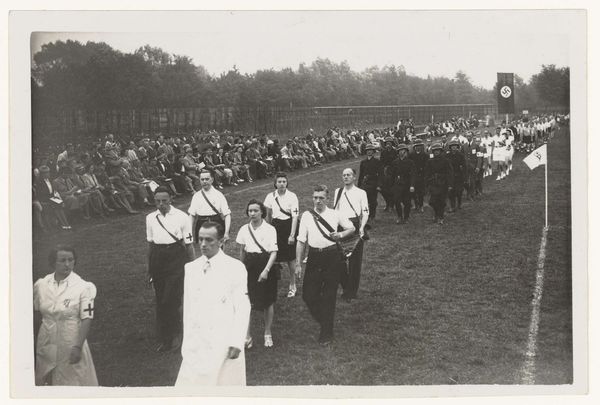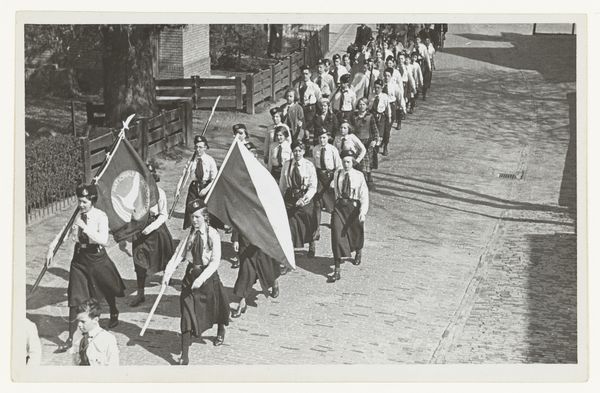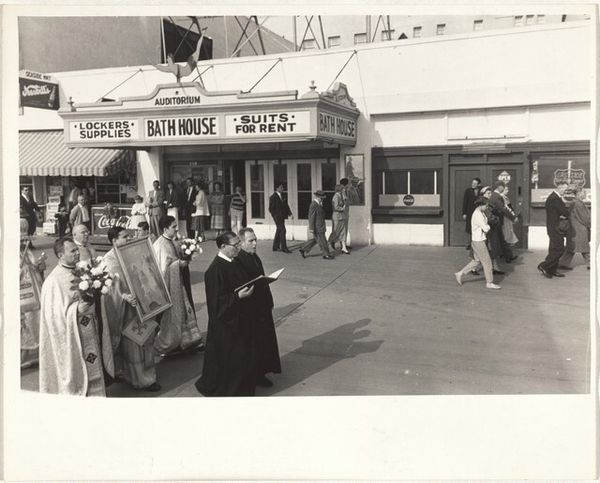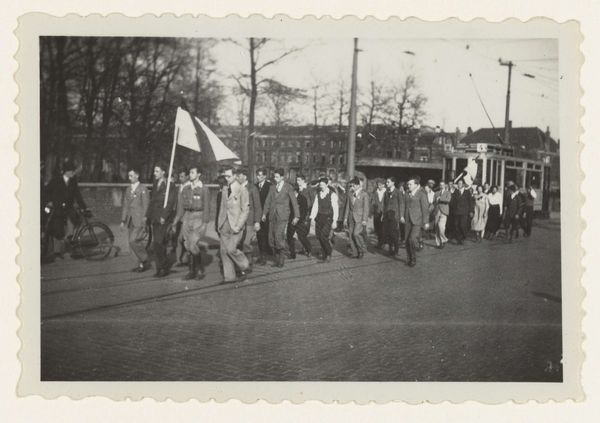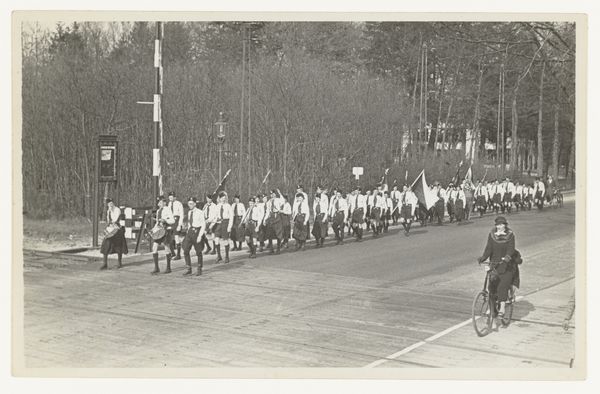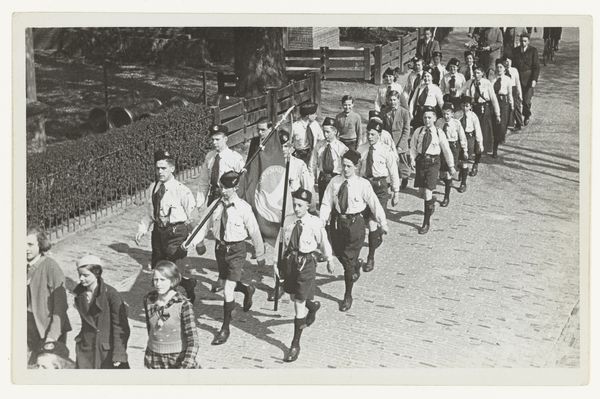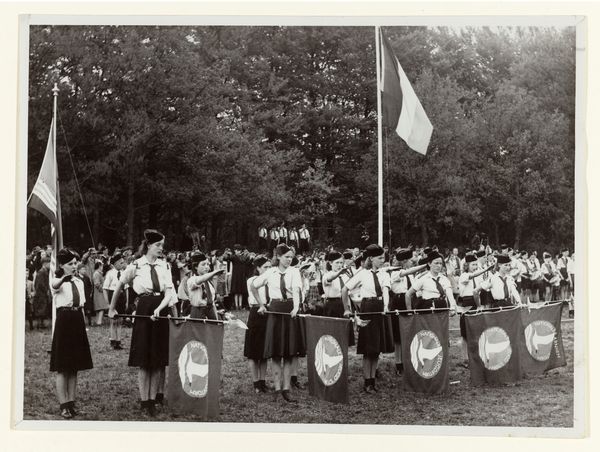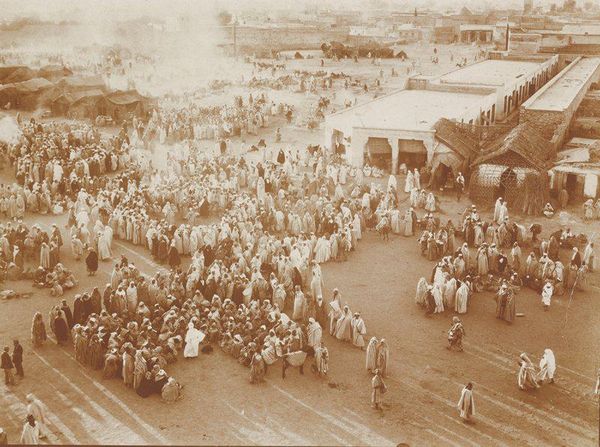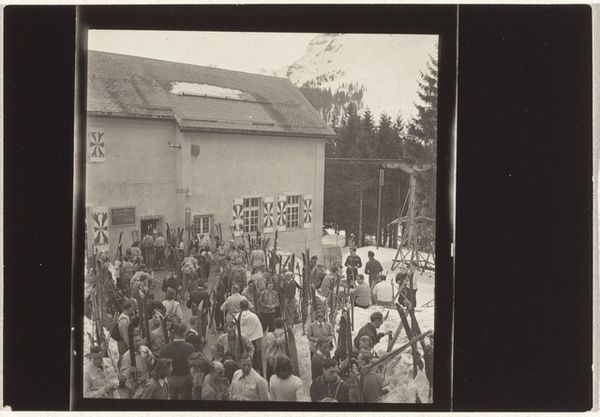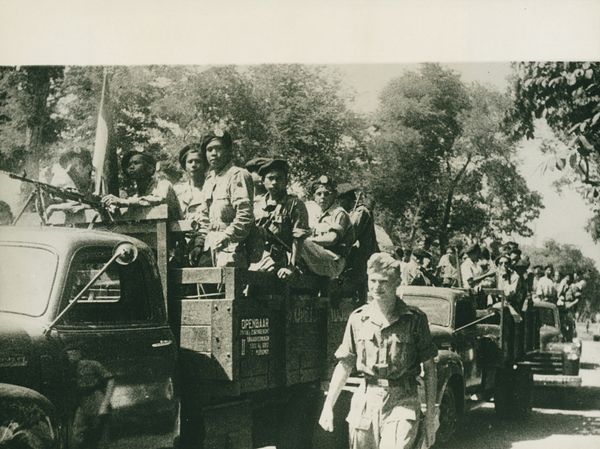
Feestelijke optocht van de 'Abteilung "Die germanische Zeit" des Festzuges 2000 Jahre deutsche Kultur' in München, 1937 Possibly 1937
0:00
0:00
print, photography
#
street-art
# print
#
landscape
#
archive photography
#
photography
#
historical photography
#
cultural celebration
#
orientalism
#
cityscape
#
history-painting
#
modernism
Dimensions: height 119 mm, width 165 mm
Copyright: Rijks Museum: Open Domain
Editor: We're looking at "Feestelijke optocht van de 'Abteilung "Die germanische Zeit" des Festzuges 2000 Jahre deutsche Kultur' in München, 1937," a photograph attributed to Presse-Photo GMBH. The imagery feels… well, staged, and more than a little unsettling given the date. What's your read on it? Curator: Indeed. This photograph documents a parade promoting Nazi ideology through a fabricated historical narrative. The explicit goal of these parades was to manufacture consent and enthusiasm for the regime’s vision of German cultural heritage. Consider the banners – symbols of power juxtaposed with what they claim is 'Germanic' heritage. Editor: So it’s not really about history but about creating a specific, politically motivated story? Curator: Precisely. It’s about crafting a public image. Note how the classical garb worn by the women links the regime with a fabricated ancient lineage, designed to convey a sense of timeless authority and racial purity. Who are these performances intended to persuade? Editor: Both the participants, creating a sense of collective identity, and the onlookers, to impress upon them this manufactured history as truth. It's pretty chilling when you think about the power of images. Curator: Exactly. By studying images like this one, we gain insights into the strategies employed by totalitarian regimes to manipulate public opinion. What do you make of the scale and composition of the procession? Editor: It creates a feeling of immensity, of an unstoppable force moving forward in time. The people are almost secondary to the banners and symbols. Looking at this piece I keep thinking about how powerful such propaganda was. I didn't think about the photo’s composition as rhetoric at all before we discussed it. Curator: That’s a key point. Understanding the staging is fundamental to grasp how public imagery can be a form of political and social engineering.
Comments
No comments
Be the first to comment and join the conversation on the ultimate creative platform.
